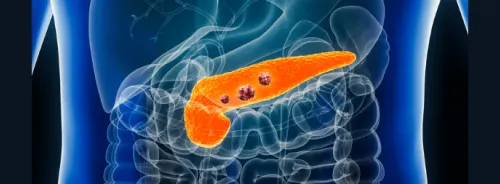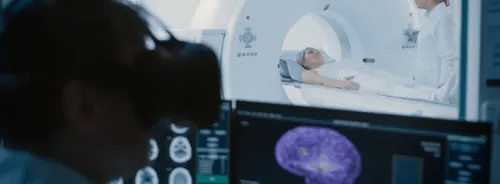HealthManagement, Volume 11 - Issue 4, 2011
Author
Breast cancer screening has proved to be effective in reducing mortality, and many experts consider mammographic screening to be one of the major medical successes of recent decades. The use of screening mammography is based on the assumption that breast cancer is a progressive disease, and consequently its earlier detection and diagnosis will lead to an improved prognosis for affected women. The goal of mammographic screening is to detect preclinical ductal carcinoma in-situ (DCIS) and lymph node-negative invasive cancers of less than 15mm, which have a good prognosis.
The randomised controlled trials (RCT) carried out about 30 - 45 years ago are of great importance since their results represent the scientific basis for the widespread use of organised mammographic screening services today. Expert panels have concluded that a mortality reduction of about 25 percent was achieved among women invited to screening as compared with the control groups. Unfortunately, these trials were (similar to most other randomised trials) not perfectly designed, could not answer all the questions, and the results were conflicting. During the last one to two decades, there has been decreased mortality from breast cancer due to several reasons, including improved breast cancer therapy, increased cancer awareness, and probably reduced intake of hormone replacement therapy (HRT).
Since mammographic screening has been carried out opportunistically in most Western countries in addition to the standardisation of population-based mammography screening, it becomes more and more difficult to evaluate the effects of organised screening programmes. Opponents of screening have, during the last years, postulated that the decrease in mortality rates from breast cancer is mainly due to improved therapy and only to a lesser degree caused by mammographic screening.
It is important to be aware that side-effects are inherent in screening, but the number of such events should of course be kept at a minimum. A hot topic regarding mammographic screening is the age of the women participating, i.e. the target groups, that should be included. The main controversies and side-effects of mammographic screening are:
- Its actual effectiveness on mortality reduction;
- Screening in the younger age group (40 - 49 years);
- Overdiagnosis (and consequently overtreatment), and
- False positive results.
Mortality Reduction
The Evidence Should be Obvious – so Why Question it?
International expert groups have concluded that the mortality reduction shown by the randomised control trials was about 25 percent. It is important to be aware that the result of the RCTs is based on invitation to screening regardless of whether the invited women actually attended or not (non-attenders). And women in the control group did have mammography (contamination). Furthermore, the RCTs did not use double reading, not always using a two-view examination as is commonly done today, the screening intervals were occasionally longer than two years, and the image quality was inferior compared with today's technology. All these circumstances indicate that the results from the RCTs in fact underestimate the potential effect of mammographic screening. Accordingly, analyses of organised service screening programmes have concluded that women actually attending the mammographic screening examinations will have a mortality reduction in the range of 35 - 40 percent, and perhaps even more.
Opponents of mammographic screening, especially from the Scandinavian countries, have recently published several studies concluding that the mortality reduction due to mammographic screening is rather small, if there is a mortality reduction at all. It is obvious that either the many supporters of screening or the few very critical opponents have made some serious mistakes in their analyses. The best way to answer the question regarding effects of mammographic screening on breast cancer mortality is through randomised controlled trials.
However, it may not be possible to carry out such trials any more. Evaluation of organised service screening programmes is a difficult task, and there are a lot of factors that might cause serious bias in the analyses: Opportunistic screening for many years, non-attenders, the long observation period necessary to demonstrate the effect on mortality, the decreasing incidence of breast cancer seen during the last decade, access to cancer- and mortality registries on individual patient levels, and overall versus breast cancer specific mortality are only some of the great challenges for evaluating the effect of mammographic screening.
Regretfully, even so-called "evidence-based" analyses from neutral public and federal agencies are occasionally published based on subjectively selected material with dubious or misleading conclusions. The consequence is that there seems to be a never ending controversy regarding the effectiveness of mammographic screening.
Screening for the 40 - 49 Age Group
Do We Need More Proof of Effectiveness?
Some of the initial meta-analyses of data from the RCTs did not demonstrate convincing evidence of mortality reduction in women aged 40 to 49 years due to several reasons. However, subsequent meta-analyses including later follow-up data before demonstrate a significant mortality reduction also for this younger age group.
A main reason for scepticism regarding mammography in the younger group is the lower sensitivity for mammography in women with dense breast parenchyma. Dense breasts are far more commonly found in younger than in older women. Mammography has a sensitivity of about 90 percent in women with fatty breasts as compared with only about 50 percent or even less in the very young group as shown by multimodality (mammography, ultrasound, and MRI) screening in high-risk women.
New advanced applications including full-field digital mammography (FFDM), computer-aided detection (CAD), and the new technique of tomosynthesis may probably improve the sensitivity of screening examinations in women with dense breasts somewhat but not sufficiently. A hot upcoming topic is so-called personalised (or individualised) breast cancer screening using ultrasonography and MRI depending on age, risk profile, and breast density. For women aged less than 50 years the screening intervals should be shorter that the two-year interval recommended in Europe for women aged 50 - 69 years.
In Sweden, approximately 50 percent of the counties invited women aged 40 - 49 years and the remaining 50 percent invited only women aged greater than 50 years to their service screening programmes. In a recently published study from Sweden, having an average of 16 years follow-up, it was shown that women aged 40 - 49 years attending the screening programme had a significant mortality reduction of 29 percent as compared with the younger age group in the counties not offering mammographic screening.
Overdiagnosis
Is it Possible to Quantify the Harm of Screening?
Overdiagnosis is the detection of cancer that would not have presented clinically during the woman's lifetime and thus would not have been diagnosed in the absence of screening. Cancers detected at screening that would not have presented clinically represent the major form of harm in mammography screening. Overdiagnosis could be regarded as an extreme type of so.
There are two aspects regarding overdiagnosis: First, the extent of the problem, i.e. how many cancers will be diagnosed in a screening programme that would never have progressed; and second, the harm caused to individuals. Several studies have tried to quantify the problem of overdiagnosis. The estimation of overdiagnosis in mammography screening reported in the literature varies between oalled lead time bias. Some cases of overdiagnosis are inevitable.
There are two aspects regarding overdiagnosis: First, the extent of the problem, i.e. how many cancers will be diagnosed in a screening programme that would never have progressed; and second, the harm caused to individuals. Several studies have tried to quantify the problem of overdiagnosis. The estimation of overdiagnosis in mammography screening reported in the literature varies between one and 52 percent. Then, the next question is of course how it is possible that experts come to such quite different results.
A main problem when estimating the frequency of overdiagnosis is the gradual implementation of mammography screening in almost all countries. Another problem has been whether the increasing detection of DCIS should be considered as an indication of overdiagnosis. DCIS was an unusual diagnosis before the implementation of mammography screening but today they represent about 20 - 25 percent of the screening-detected cancers. Thus, varying overdiagnosis estimates could also be influenced by the threshold for recall of subtle nonspecific lesions. A question occasionally raised is whether overdiagnosis is an issue for mammography screening interpretation, i.e. for radiologists. Radiologists seldomly use this term because it is at this time not possible in mammography to differentiate aggressive subtle cancers from small cancers that would represent an overdiagnosis. In general it is suggested that overdiagnosis (or overdetection), if exists, is associated with the detection of DCIS and some small invasive cancers.
The overdetection might be driven by improved technological developments, including FFDM, CAD, and advanced biopsy techniques such as vacuum-assisted biopsy. Although nobody knows the magnitude of overdiagnosis, most experts consider the harm caused by screening to be not more than 10 percent.
False Positive Results
Could the Number be Reduced?
False positives are an inherent part of any screening programme. The mammographic features of preclinical subtle cancers are, as mentioned above, often highly nonspecific, and it is often impossible to differentiate a malignancy from a benign condition. Consequently, the women have to be called back for diagnostic work-up. Benign lesions are diagnosed in most cases of assessment in screening programmes. It is, of course, a psychologic distress for the women to receive the message that something is suspicious on the mammograms. In addition to this stress, recalls are very costly due to the additional imaging including extra views, ultrasound, and MRI as well as needle biopsies if indicated.
The recall rates, i.e. the number of false positives, vary heavily among countries with mammography screening. The estimated cumulative risk of a false positive call-back for a woman having regular screening has been estimated to be more than 40 percent in the United States. In Norway, where they offer screening every second year from 50 to 69 years for a total of 10 screening rounds, the cumulative risk of false positive recalls are about 21 percent.
The much lower call-back rates in Europe as compared with the United States is partly explained by different medico-legal environments. In addition, however, the logistics and organisation of the screening programme most likely also play an important role for the different recall rates. Single reading is the standard in the U.S, whereas double reading with consensus (or arbitration) is commonly used in Europe according to the European guidelines. A main purpose of the consensus meetings is to increase the specificity, i.e. reduce the number of false positives.
Computer-aided detection (CAD) is often included in the U.S. but seldom used in Europe. CAD increases the cancer detection rate but also the number of false positives. In European screening programmes with double reading and consensus this side-effect would probably be kept at a minimum. Implementation of digital mammography has not reduced the number of false positives. On the contrary, full-field digital mammography has slightly increased the recall rate in several studies. Cancers diagnosed at short-term follow-up are classified as interval cancers in some screening programmes but not in others. Follow-up cases that do not prove to be malignant should be defined as false positives. The number of follow-up cases should be kept at a minimum.
Conclusions
Mammography screening has been one of the most controversial topics in healthcare during the last decades, and the controversies seem to be neverending. Not all breast cancers diagnosed in mammographic screening will turn out to be lethal. Consequently, some women will be overtreated. However, most studies conclude that the benefits of mammographic screening in terms of lives saved significantly exceeds the harm of overdiagnosis. Nevertheless, all women attending mammographic screening should be informed not only about the proven reduction of mortality from screening but also about the potential harm of overdiagnosis and overtreatment.
For further reading contact our Managing Editor Dervla gleeson at [email protected]





